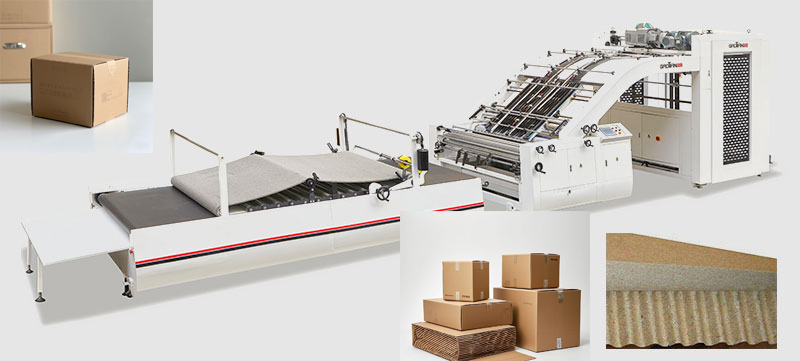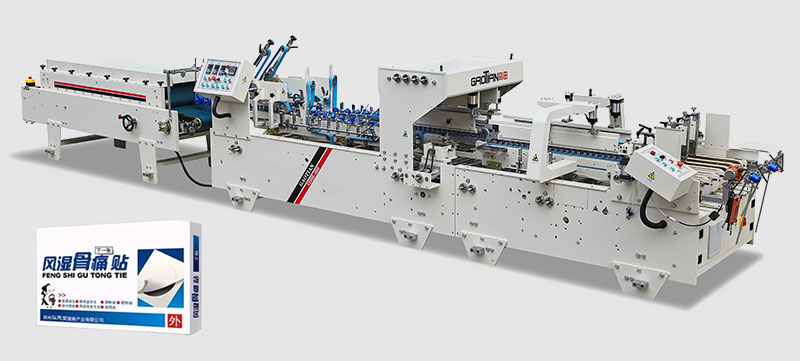Main Factors Causing the Deviation of the Laminating Position in an Automatic Flute Laminating Machine
In the production process of corrugated cardboard, an automatic flute laminating machine plays a crucial role. However, the deviation of the laminating position is a common issue that can seriously affect the quality of the final product and production efficiency. Understanding the main factors contributing to this problem is essential for manufacturers to take appropriate countermeasures.

1. Mechanical Wear and Misalignment
Over time, the continuous operation of the automatic flute laminating machine leads to mechanical wear of its components. For example, the bearings that support the rollers may experience wear, which can cause the rollers to become misaligned. If the upper and lower rollers are not parallel, the paper will be unevenly stressed during the laminating process. As a result, the laminating position will deviate. Additionally, the guide rails that the moving parts rely on can also wear out, leading to inaccurate movement of the paper - feeding mechanism. This misalignment can be a major cause of laminating position deviation.
2. Paper - related Issues
2.1 Paper Thickness and Flatness
The quality of the paper used in the laminating process is of great significance. If the paper has inconsistent thickness, different parts of the paper will be affected differently when passing through the laminating machine. Thicker areas may cause the paper to move more slowly or be pushed to one side, resulting in a deviation in the laminating position. Similarly, if the paper is not flat, with wrinkles or curls, it will not be fed smoothly into the laminating machine. These irregularities can disrupt the normal laminating process and lead to misalignment.
2.2 Paper Moisture Content
Moisture - content - related problems also contribute to laminating - position deviation. When the paper has a high moisture content, it may expand during the laminating process due to the heat and pressure applied by the machine. This expansion can cause the paper to shift its position relative to the laminating rollers, leading to inaccurate laminating. On the contrary, overly dry paper may become brittle and is more likely to break or be difficult to feed evenly, which also affects the laminating position.
3. Incorrect Parameter Settings
3.1 Feeding Speed and Tension
The feeding speed and tension settings of the automatic flute laminating machine are critical. If the feeding speed is not adjusted properly, for example, if it is too fast or inconsistent, the paper may not be fed evenly into the laminating area. A sudden change in the feeding speed can cause the paper to jerk, resulting in a deviation in the laminating position. Similarly, improper tension control can lead to the paper being either too loose or too tight. A loose paper may sag or shift during feeding, while an overly - tight paper may be stretched or even torn, both of which can cause laminating - position problems.
3.2 Pressure Distribution
The pressure distribution on the laminating rollers is another key parameter. Uneven pressure distribution means that some parts of the paper are laminated with greater force than others. This can cause the paper to be pushed in the direction of the lower - pressure area, leading to a deviation in the laminating position. For instance, if the pressure on one side of the roller is significantly lower than the other side, the paper will tend to move towards the side with lower pressure during the laminating process.
4. Operator Errors
4.1 Improper Loading of Paper
The way operators load the paper onto the machine can have a direct impact on the laminating position. If the paper is not loaded correctly, such as being skewed on the paper - roll holder or not centered properly, it will start the laminating process in an incorrect position. This initial misalignment will be carried through the entire laminating process, resulting in a final product with a laminating - position deviation.
4.2 Lack of Regular Maintenance Checks
Operators are also responsible for the regular maintenance of the machine. If they neglect to perform routine checks on the equipment, problems such as mechanical wear, loose parts, or dirty sensors may go unnoticed. These issues can gradually accumulate and eventually lead to laminating - position deviations. For example, a dirty sensor may not accurately detect the position of the paper, causing the machine's control system to make incorrect adjustments.
In conclusion, the deviation of the laminating position in an automatic flute laminating machine is caused by a combination of mechanical, paper - related, parameter - setting, and operator - related factors. By carefully monitoring and addressing these factors, manufacturers can effectively reduce the occurrence of laminating - position deviations, improve product quality, and enhance production efficiency.





